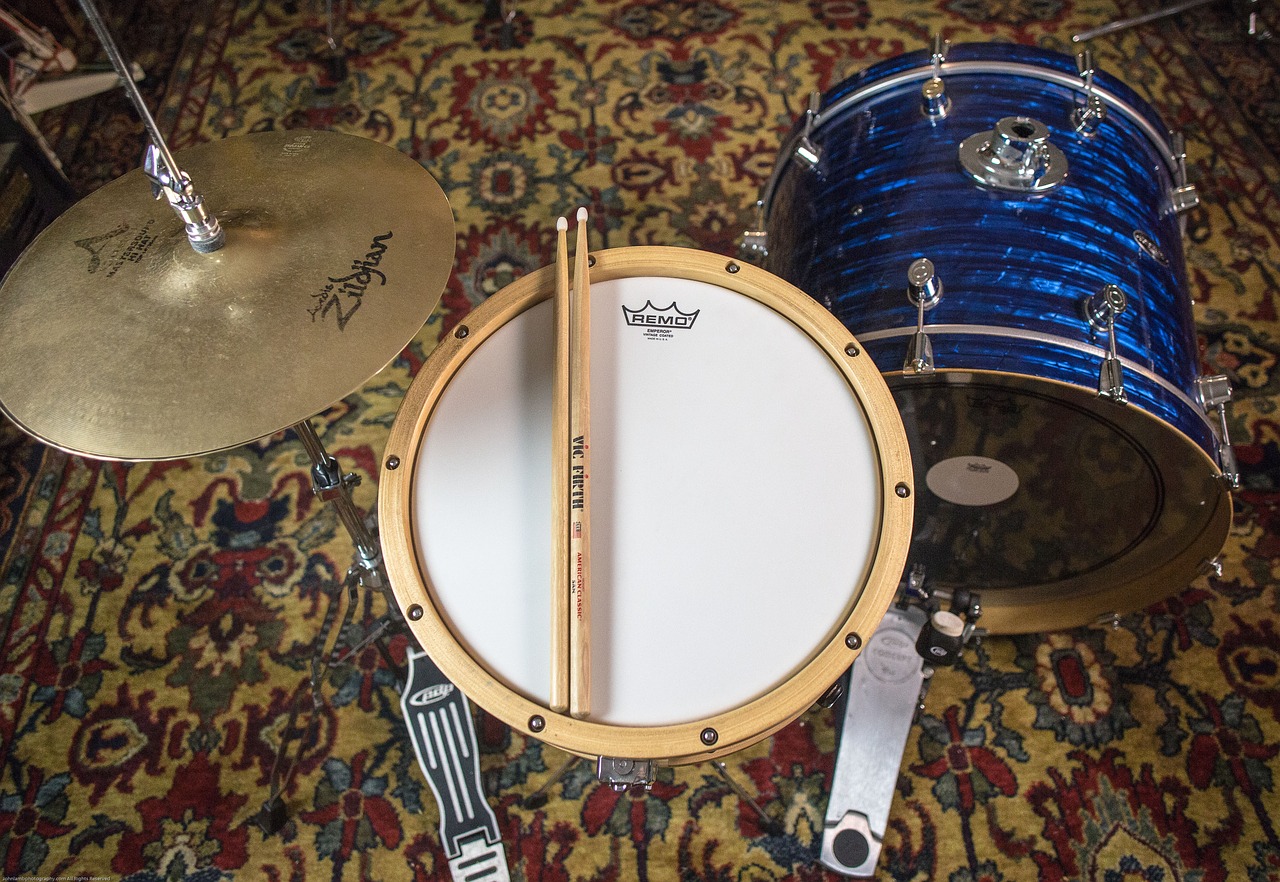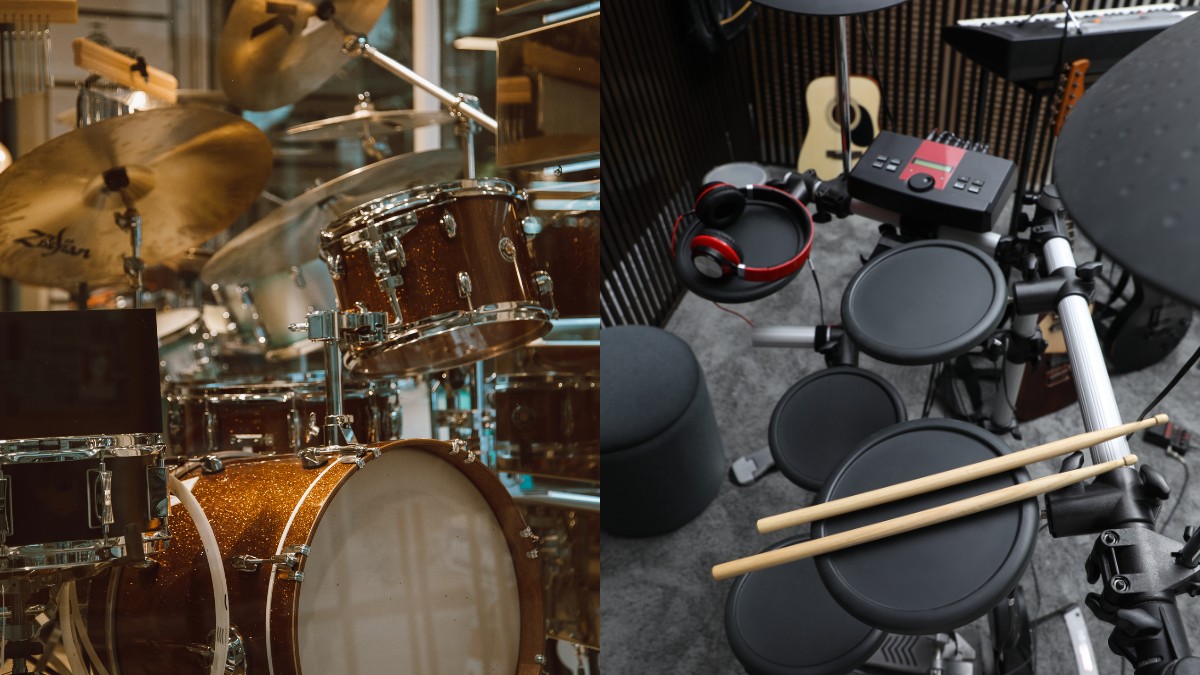A Drummer’s Easy Guide to Sticking (With Videos)

‘Sticking’ in drumming is essentially patterns that you play with your right and left hand. Practicing these patterns can improve your speed, creativity, and technical ability on the drums.
Many drummers ‘stick’ in a comfort zone of some very basic patterns. After you see the videos below, you’re going to want to change that pretty soon!
How do beginner drummers play fills? Often simply just R L R L R L sticking patterns from highest tom to lowest.
While there’s nothing wrong with this, overdoing it can cause it to become boring, standard, and doesn’t leave much room for inventiveness or interesting rhythms.
Contents
Before we get into sticking in more detail, let’s have a look at this fantastic video by Gavin Harrison on Drumeo which shows just how much that simply learning one sticking pattern can add to your drumming skills.
The take-home lesson from this: sticking patterns and rudiments are not just for snare drummers!
What’s the Point of Sticking?
Sticking patterns are essentially some of the most important building blocks that help us express ourselves as drummers.
That’s why drum teachers stress the importance of learning and practicing rudiments, which make up the standard sticking patterns for drummers.
Learning and practicing many great sticking patterns will make them strong in your muscle memory. Once you get to this level, you can then start to apply them to the drum set in really interesting ways.
For example, in Gavin Harrison’s video below, he showed us a lovely 5 note grouping RLRRL applied to the drum set.
Simply moving these from a 16th note groove into a triple groove completely changes the feel of the sticking pattern. Although this might initially be tough for a beginner, once you put a bit of practice into it, you will be astounded at the progress you will make.
Your Favorite Sticking Patterns

Drummers often revert to their favorite sticking patterns when on the drum set. These will usually be ones that they are very comfortable with and are particularly comfortable while coordinating their hands and feet.
There are pros and cons to this. When I started out playing drums many years ago… I quickly got strong on the double-stroke roll (RRLL) or (LLRR), I started heavily using this during my drum fills. I thought this sounded great, but I completely neglected improving my single stroke rolls and other great sticking patterns.
By staying in your comfort zone of sticking patterns you may also be furthering the imbalance between your strong and weak hand, which leads on to our next section.
Natural vs Alternate Sticking Patterns
The difference between these is very simple:
Natural sticking patterns are where the sticking pattern always reverts back to one hand.
Alternate sticking patterns give each hand an equal opportunity to develop.
For example, in triplets:
Natural Sticking: RRL RRL RRL RRL
vs
Alternate Sticking: RLR LRL RLR LRL
Natural sticking patterns are very useful on the drum set and they can sound very even and solid. Sticking and accents are always played in the same pattern, so the timing and velocity of the strokes will be very consistent.
Alternate sticking patterns give your weak hand an even amount of action. This really comes into play when playing accents. For example, if you accent the first note of each triplet, the differences will look like this:
Natural Sticking: RRL RRL RRL RRL
vs
Alternate Sticking: RLR LRL RLR LRL
You don’t necessarily need to play alternate sticking on your drum set very often, but it may be useful to either practice them OR put a lot of effort into leading your natural sticking patterns with your weak hand.
For example, If your weak hand is your left hand, then you could also practice LLR LLR LLR LLR in this case.
Rudiments
There are 40 snare drum rudiments. There were originally 26, but the list was extended by a further 14 by the Percussive Arts Society in 1984. There are also countless other ‘hybrid’ patterns based on these.
If you play the drum set, you don’t necessarily need to learn all of these patterns. Start with some of the basics and get great at applying it to the drum set.
For example, it’s better to be strong on 7 essential drum rudiments rather than just skim the surface of all 40.
How should you learn to play the rudiments?
A practice pad is a great option. It can help you hone in on the timing and velocity of each of your drum strokes. Practice pads can be a little bouncy and therefore might not accurately replicate the feeling of playing on a deeper drum (e.g. on a floor tom), however, they are still fantastic at training your muscle memory to learn these sticking patterns.
They can also be really quiet, which makes it great when practicing at night or in a busy neighborhood.
When doing so, make sure to practice with a metronome. Get great timing and learn new sticking patterns. That’s a very productive practice session!
Summary
Sticking patterns are very important! If you play the drums, make sure to keep your hand and feet consistent. Always work on your weak hand as well as your strong hand too, so that it continues being balanced.
There are two types of sticking patterns: Natural and Alternate.
Natural sticking patterns involves always playing with the same hand while alternate sticking patterns give each hand an even opportunity to play.
Don’t neglect any of the 40 snare drum rudiments and practice them by using a practice pad or metronome. There is no need to learn all of them, however, it’s better to learn some of the basics and perfect them.
Don’t let your drumming plateau into a comfort zone. Make a conscious effort to put time into practicing new sticking patterns.







